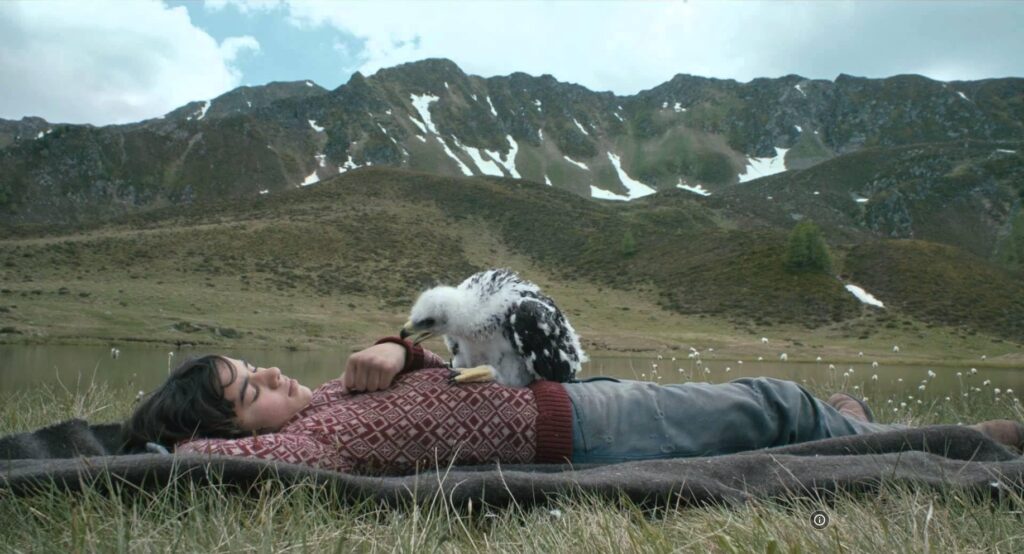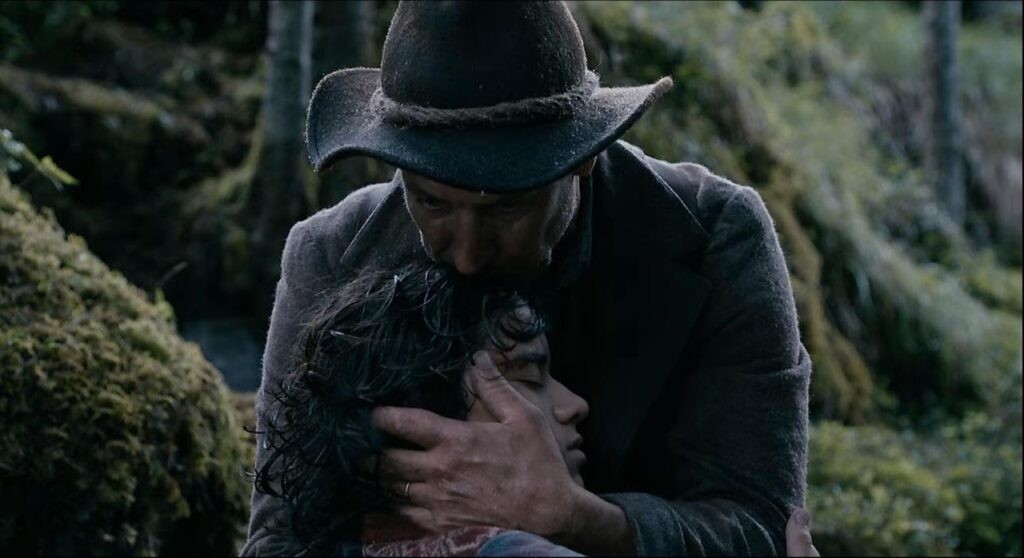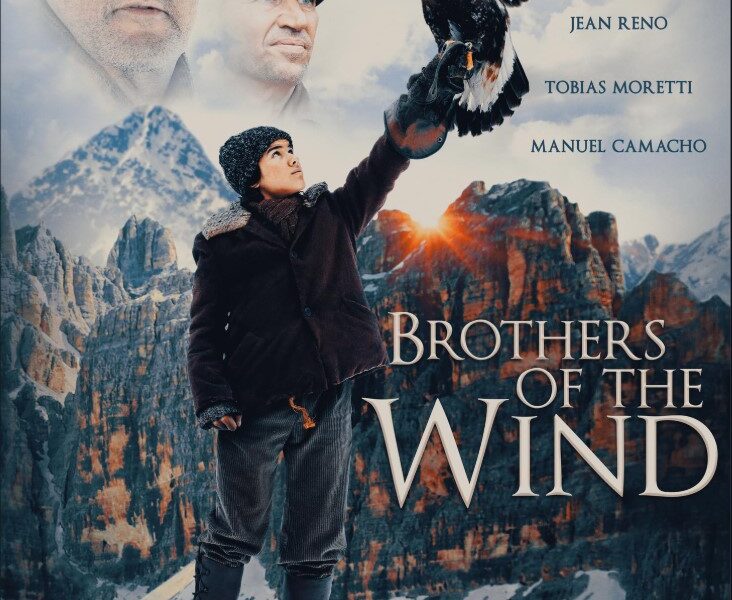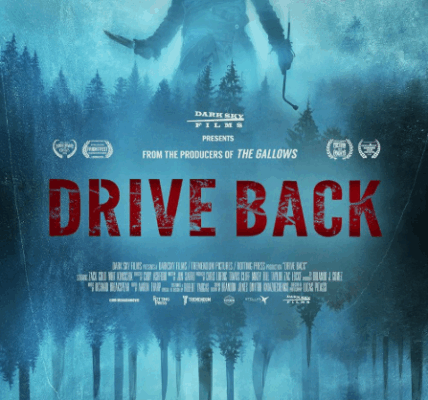1. Plot Summary
Set in the Austrian Alps of the 1960s, Brothers of the Wind tells a parallel story of a lonely boy and a young eagle. Lukas, a boy estranged from his father Keller after the death of his mother, struggles to find love and connection. He spends much of his time wandering the forests and mountains, retreating from human contact.
One day, Lukas discovers an eaglet that has been abandoned after its sibling outcompeted it. Naming the bird Abel, Lukas secretly raises and nurtures it with the guidance of Danzer, a kind forester who narrates the story. Abel grows quickly, and the bond between boy and bird becomes a lifeline for Lukas.
As Abel learns to fly and survive, Lukas too learns to face life, heal his fractured relationship with his father, and discover resilience. Their intertwined journeys — one toward freedom in the wild, the other toward reconciliation and maturity — culminate in Lukas setting Abel free to live as nature intended. The film closes with Lukas’s growth into a young man who has learned to reconnect with both his father and the world.

2. Notable Elements
Strengths:
- Stunning cinematography: Sweeping shots of the Alps, forests, mountains, and skies create a visually breathtaking experience. Nature itself feels like a character.
- Symbolism: The eagle’s struggle for survival mirrors Lukas’s own emotional journey.
- Narration: Danzer’s voice provides warmth, wisdom, and continuity, grounding the story like a fable.
- Emotional simplicity: The bond between Lukas and Abel resonates as a universal story of love, loss, and letting go.
Weaknesses:
- Predictability: The narrative follows a familiar arc of boy-and-animal friendship leading to inevitable separation.
- Character depth: Lukas’s father Keller is underdeveloped, more archetypal than complex.
- Pacing: At times slow, lingering more on visuals than advancing plot.
- Limited dialogue: While atmospheric, the lack of interaction beyond the main trio (Lukas, Danzer, Keller) narrows the scope.
3. Themes and Messages
- Man and Nature: The film highlights harmony between humans and wildlife, suggesting that empathy and respect bridge the gap.
- Parenthood & Healing: Lukas and Keller’s estranged relationship parallels Lukas and Abel’s bond, showing how nurturing can restore broken families.
- Growth & Independence: Abel’s eventual flight symbolizes Lukas’s own journey toward maturity and independence.
- Resilience in Loss: Both Lukas and the eagle experience loss early; their survival becomes a metaphor for strength.
- Freedom vs. Possession: The bittersweet lesson that true love means letting go — Lukas must release Abel for it to thrive.
4. Personal Impressions
What I admired:
- The breathtaking nature cinematography — every frame feels like a painting.
- The allegorical storytelling style, with narration that frames the events as both legend and memory.
- The emotional bond between Lukas and Abel, which feels sincere and moving.
- The universal message about love, loss, and freedom, accessible to audiences of all ages.
What I felt was weaker:
- The simplicity of the story — while poetic, it sometimes feels stretched thin for a feature-length film.
- Some melodramatic elements in the father-son conflict are underexplored, leaving Keller more symbolic than fully human.
- Pacing could test patience; some sequences feel prolonged for the sake of visuals.

5. Audience Recommendations
Will enjoy if you:
- Love nature films with stunning landscapes and wildlife cinematography.
- Appreciate fable-like storytelling, with symbolic parallels between humans and animals.
- Enjoy family-friendly emotional dramas that balance simplicity with heartfelt themes.
- Are comfortable with slower, visually driven narratives.
Might not enjoy if you:
- Prefer fast-paced plots or dialogue-heavy films.
- Dislike predictable “boy and animal” friendship arcs.
- Want deep, complex human character development — this film leans more on allegory than realism.
6. Conclusions and Rating
Brothers of the Wind is a visually stunning, poetic film that intertwines human and natural stories. Though simple and at times predictable, its emotional resonance and breathtaking landscapes make it a moving fable about love, loss, and letting go. Like the eagle at its center, the film is less about destination and more about the journey toward freedom. lc
Star Rating: ★★★★☆ (4 out of 5)




